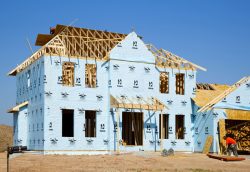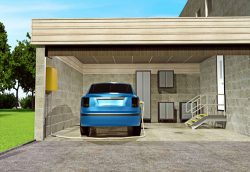| Your guide to green living in Montgomery County, MD |

I-Codes? IECC? IgCC? As a building operator, homeowner, or environmental advocate, you may be confused or curious about the alphabet soup of building codes at work behind the scenes to help protect our health, safety, and welfare in buildings where we live, work, and play.
Read on for a primer on building codes and their role in helping us tackle the climate crisis.

Building codes are a set of rules and regulations that specify the minimum standards to which building and certain other structures must conform to protect the health, safety, and welfare of the public. They help ensure the engineering of safe, sustainable, affordable and resilient structures.
The national model construction codes – known collectively as “I-Codes” – are published by the International Code Council (ICC). There are 14 sections, or codebooks, in the I-Codes suite that regulate different facets of a building’s design and construction. They include codes for buildings, energy conservation, existing buildings, fire safety, fuel gas, mechanical, plumbing, private sewage disposal, property maintenance, residential buildings, swimming pools and spas, and zoning.
I-Codes are developed by the International Code Council on a three-year cycle through an open, consensus-based process through which anyone can participate.
These model codes heavily influence the codes that are adopted and enforced by states and municipalities here in the United States. However, there’s no national or federal building code. The ICC publishes model codes, but it’s up to the authority having jurisdiction (AHJ) to decide to what, if anything to do with the codes.
AHJs in some cases are the state (if that state is the one that enforces the code), but in most cases are local jurisdictions (cities, towns, villages, counties, townships, and other municipalities).
Locally, the Maryland Department of Labor adopts these standards and obligates its political subdivisions to adopt the codes within a specific time period. In most cases, each local jurisdiction may modify these codes to suit local conditions. Some codes (The Energy Code and the Accessibility Code) can be made more stringent but not less by the local jurisdictions. Maryland is generally one of the early adopters of the new editions of the I-Codes.
Montgomery County then reviews, sometimes modifies, and adopts these standards. As of April, 2020, Montgomery County Council had adopted the 2018 editions of the I-Codes. It governs all buildings and structures within the County.
 In Montgomery County, the Department of Permitting Services (DPS) enforces building codes. Building code enforcement is achieved through the review of design plans, inspecting construction work, and issuing building and occupancy permits.
In Montgomery County, the Department of Permitting Services (DPS) enforces building codes. Building code enforcement is achieved through the review of design plans, inspecting construction work, and issuing building and occupancy permits.
Codes regulate the design and construction of buildings, but they don’t prescribe how a building is designed or constructed. That’s where construction industry professionals – the architects, engineers, interior designers, contractors, and tradespeople – come in. Ultimately, it’s the design professional whose stamp is on the plans that is legally responsible that the building complies with all applicable codes and laws.
Different parts of the I-Codes regulate different parts of the building and their systems and incorporate standards for efficiency and energy use, water efficiency, insulation, mechanical systems, and other facets that impact the health, safety, resilience, and, ultimately, operating costs of a building. Each code cycle seeks to strengthen and improve the standards to which buildings are built.
Once built, buildings remain for a long time at the quality level of their original construction. A house built today is likely to have the same orientation, foundation and building enclosure for its entire life. Its roofing system, wiring, windows, and energy and water efficiency can be upgraded after the fact, but only at significantly greater cost than as part of original construction.
The ICC also publishes an International Green Construction Code (IgCC) which addresses site sustainability, water use efficiency, energy efficiency, indoor environmental quality, materials and resources, construction, and plans for operation. An “overlay” code, the IgCC can be adopted in addition to other I-Codes to promote green construction.

To date, Montgomery County has adopted the 2012 IgCC. This version establishes a baseline requirement that new, non-residential construction and additions of 5,000 square feet or more must be designed and constructed to reduce building energy use by at least 50% over the average commercial building energy consumption in the base year of 2000.
DPS is also responsible for other programs and process that help residents and businesses be greener. For example, DPS coordinates permitting for commercial and residential solar systems and processes over 1800 applications each year! They also handle permitting of electric vehicle charging stations. See their new EV charging guidelines that make it easier for residents to install stations and charge at home.
What portions, and editions, of NFPA codes are adopted / enforced by Montgomery County building department?
You can see more about fire prevention and code compliance on the DPS website here: https://www.montgomerycountymd.gov/DPS/Codes/FPCC-Codes-Index.html.